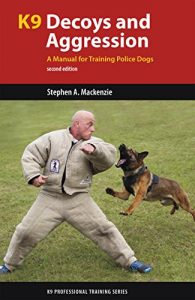Learn how to:
A good decoy is a K9 trainer’s most valuable tool. A good decoy can make a poor dog better, a mediocre dog good, and a good dog excellent. A poor decoy, on the other hand, can havedevastating effects, ruining even a good dog.
Stephen Mackenzie, professor of animal science and deputy sheriff with more than 30 years’ experience training and handling police dogs, shows you how to master the art of being a decoy in this revised and updated new edition. You’ll learn how to communicate effectively with your canine partner and how to stimulate specific types of aggression in the dog in a safe, positive way. This guide is essential reading for all decoys, including both instructors and students. It will improve the effectiveness of all K9 personnel, handlers, and trainers.
- Master the basic skills and common procedures every decoy needs.
- Read dogs accurately through seven key factors.
- Stimulate and reward useful forms of K9 aggression.
A good decoy is a K9 trainer’s most valuable tool. A good decoy can make a poor dog better, a mediocre dog good, and a good dog excellent. A poor decoy, on the other hand, can havedevastating effects, ruining even a good dog.
Stephen Mackenzie, professor of animal science and deputy sheriff with more than 30 years’ experience training and handling police dogs, shows you how to master the art of being a decoy in this revised and updated new edition. You’ll learn how to communicate effectively with your canine partner and how to stimulate specific types of aggression in the dog in a safe, positive way. This guide is essential reading for all decoys, including both instructors and students. It will improve the effectiveness of all K9 personnel, handlers, and trainers.






